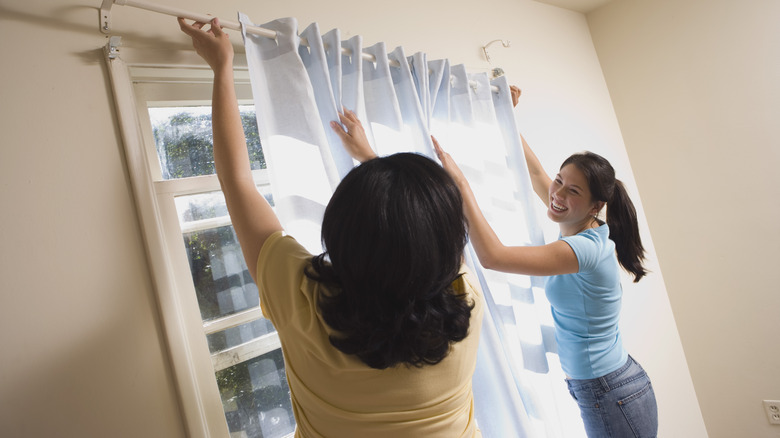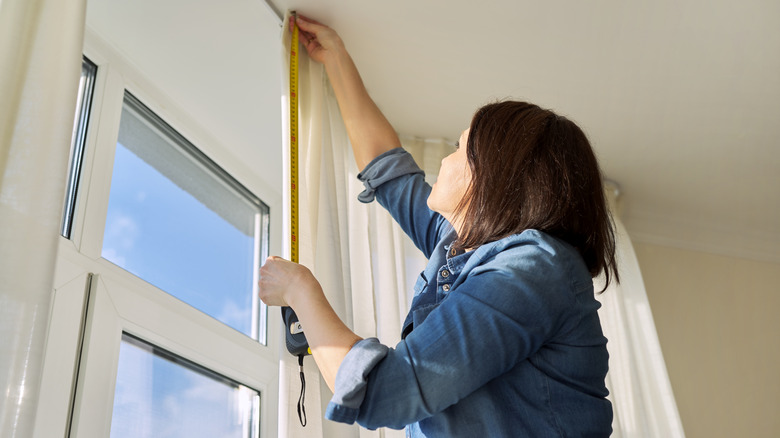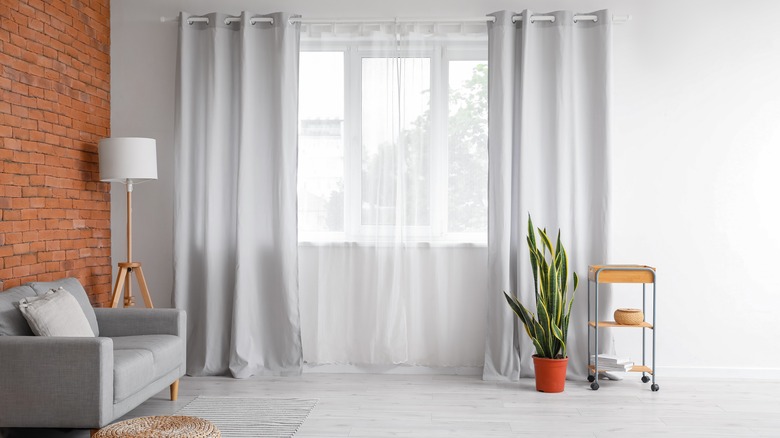HGTV's Emily Henderson Explains Why Too Long Is Better Than Too Short Curtains
Curtains can make or break a room, as the wrong pattern, color, or texture can completely throw off a carefully curated ambiance. Some people spend too much time thinking about the style of curtains rather than the length, often opting for shorter ones out of fear that too-long curtains will look silly and unfinished. However, HGTV star Emily Henderson is adamant that homeowners should always choose too long over too short, as curtains can always be shortened to the right length through hemming.
If you buy curtains that are too short, there is nothing you can do to lengthen them, so they're bound to negatively impact your room's design. "The most common curtain mistake is just painful to look at — the 'too short' curtain," Henderson writes on her blog, Style by Emily Henderson. "It does EXACTLY what pants that are too short do — it cuts off your room (leg) in a really jarring way, making it look/feel short/stubby and awkward." To avoid this, buy extra fabric and then make it the right length through the simple process of hemming.
How to hem your too-long curtains
It's almost impossible to find premade curtains that are going to fit your home perfectly, so your best bet is to buy some a little longer than you need and hem them. When choosing the right curtains, many people purchase ones that are around 84 inches long, as that's generally the standard option for premade panels that are supposed to touch the floor. However, according to Emily Henderson, that is usually too short. "84 inches is almost always not long enough," Henderson writes on her blog. "Annoyingly, 95 inches can often be too long if you have 8 foot ceilings, but it's better to buy the 95 inch and have them hemmed to around 90 inches (which is what we usually do in that case) than to go for the 84 inches."
While the process of hemming your curtains might sound intimidating and expensive, it's actually relatively easy (and basically free!) to do yourself. The first step is to pin the fabric along a horizontal line at the length you actually want, placing one pin roughly every 10 inches across the new bottom of the curtain. Next, fold and iron the crease toward the back of the curtain panel. Once that's complete, simply sew the hem and before you know it: perfectly custom curtains.
Choosing the right curtain length
Before you can figure out how short to hem your curtains, you must decide how you want them to look in your room. An easy place to start is by considering the room itself. For example, in a kitchen window, curtains that pool on the floor don't really make sense. In that instance, you'd want apron or sill length drapes, which just barely brush the bottom of the windowsill. This will create a clean look that's perfect for a busy family hub. For a sill length, you'd likely want to purchase 63 or 84 inch premade curtains and then hem them to your specific needs.
In a window that can accommodate long curtains, you could try what Emily Henderson calls the slight float, which hangs less than an inch above the ground, or the kiss, which barely touches the floor. Both of these elegant options rely on careful calculations, and you will almost always have to hem your curtains. Then there's the puddle, which is an easy answer if you don't want to spend hours calculating curtain measurements. Cultivate a romantic style by letting the long fabric pool on your floor. "[The puddle is] especially a good idea if/when your fabric is really high quality — either washed linen or velvet," Henderson claims on her blog.


